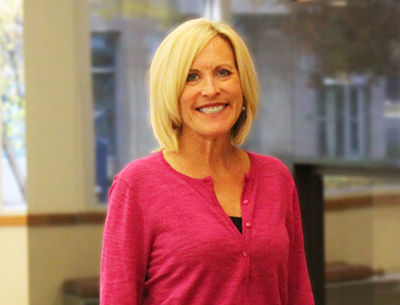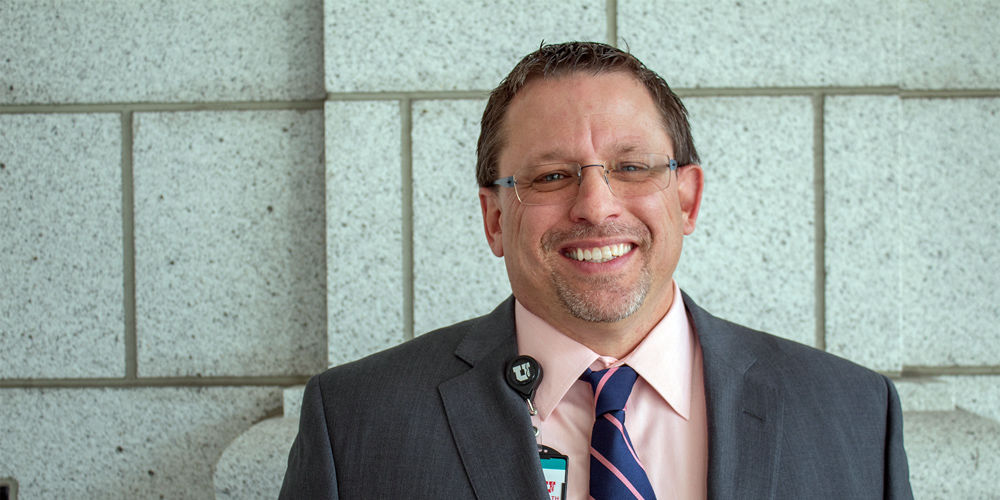have one of the more advanced information technology (IT) systems in the country. I can say that because I talk to a lot of other academic health centers. Jim Turnbull, our chief information officer, and Jim Livingston, our chief technology officer, have built a data center that is next generation. It allows us to adapt as our needs grow. If done right, IT can build a large, complex system that can stand the test of time.
Culture vs. IT
We can't solve all of our problems by installing an IT solution. While IT is a very powerful tool, we as a collective have to decide when to deploy it and when it's going to be useful.
IT shouldn't drive culture, culture should drive IT. People should drive the decisions that we want to make, the tools that we want to implement, and the systems that we want to use.
If we start by asking, "What will help us take care of our patients?" then the field of possibilities opens up. Sometimes the answer will result in a technical solution, and sometimes in a cultural solution. Ultimately, the goal is to improve outcomes so that we can provide high value care as part of our value equation.

How Technology and Teamwork Improve Patient Experience
Redstone Health Center's Melissa Briley shares her process for managing MyChart expectations.
We Can't IT Our Way Out
Consider MyChart. MyChart is a fantastic tool that allows our patients to communicate with us. But it has some unintended consequences.
I remember being in a meeting last year where there was frustration from some providers about getting very long MyChart messages. "It is taking me 10-15 minutes to read through them," one doctor said. As the clinicians talked, a potential solution emerged: “Why don't we cut down the characters, so they can't send me a long email,” another clinician said. “That way I can read it very quickly."
So, we shortened the character limit, thereby preventing patients from sending messages that were too long. After making the change, I saw Dr. Miller in the hall and gave him a high five. "We fixed it,” I said. “MyChart is done. We're not gonna have any more problems."
How long do you think that lasted?
Longer than I thought. It was about a week and a half before I started getting phone calls. "Wait a minute Howard,” one provider said. “I know we reduced it, but now I'm getting five emails. They just keep typing additional messages." We created a technical solution for a cultural problem, and culture won. Patients started sending multiple emails, instead of a single long one.
That engaged us in conversations with clinicians to start asking, What's the root cause? What are we actually trying to solve? Which started another discussion about setting expectations, doctor-patient communication, and other issues. We started to figure out the right way to use MyChart to benefit the patient-provider relationship, rather than forcing the patient-provider relationship to adapt to the tool.
Culture and IT Working Together
Information technology is like the mortar in a wall of bricks. It connects and supports all of the different building blocks in our system—the cultures and teams that work together to provide patient care. That's how I think about what our IT can do to improve care. We can take innovative groups, innovative blocks, and put them together and connect them. By putting our people first, and leveraging our data and our information services, we can develop a new structure for our health system that balances technology and culture.
Annotated transcript from Howard Weeks' speech at the Oct. 31, 2018, Leader Development Institute in Salt Lake City, Utah.
Howard Weeks
Exceptional care only happens with an engaged team. Jared Wrigley should know: he has led three diverse teams at U of U Health—first, Westridge Health Center, and now, South Jordan’s primary care team and Parkway Health Center. Here are three effective ways he engages everyone on the team.
For the past 20 years, Chrissy Daniels and Dan Lundergan have been hard at work – building culture, building space, building experiences and building trust. Practicing interviews are conversations between partners about why the work matters. Our goal is to preserve and share the stories of the teams at University of Utah Health.
To disagree means failing to agree. Synonyms include to contradict, challenge or debate. Synonyms do not also have to include to argue, quarrel, dispute, bicker or clash. Pediatric intensivist Jared Henricksen shares the best path forward when words become clouded with emotion.
